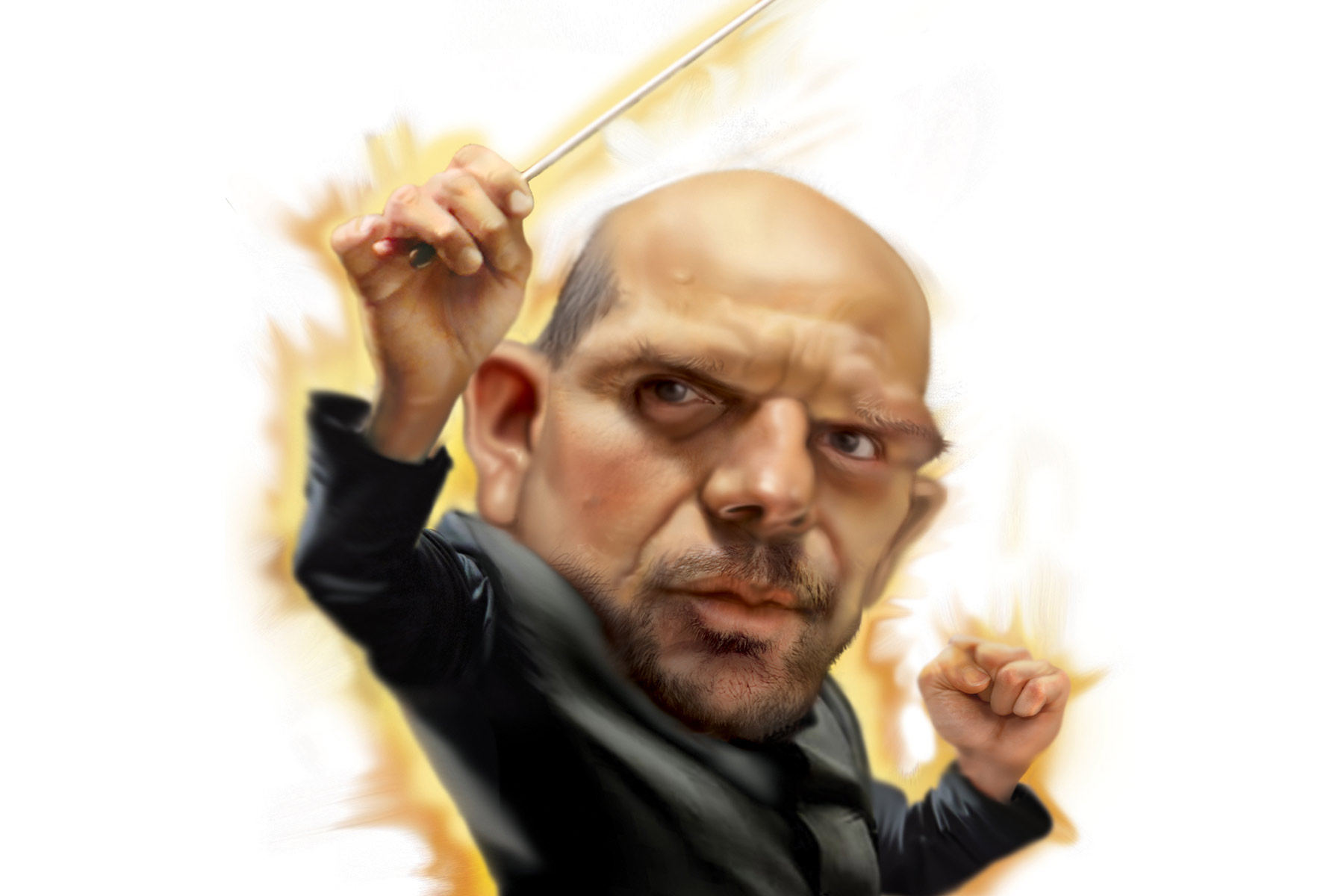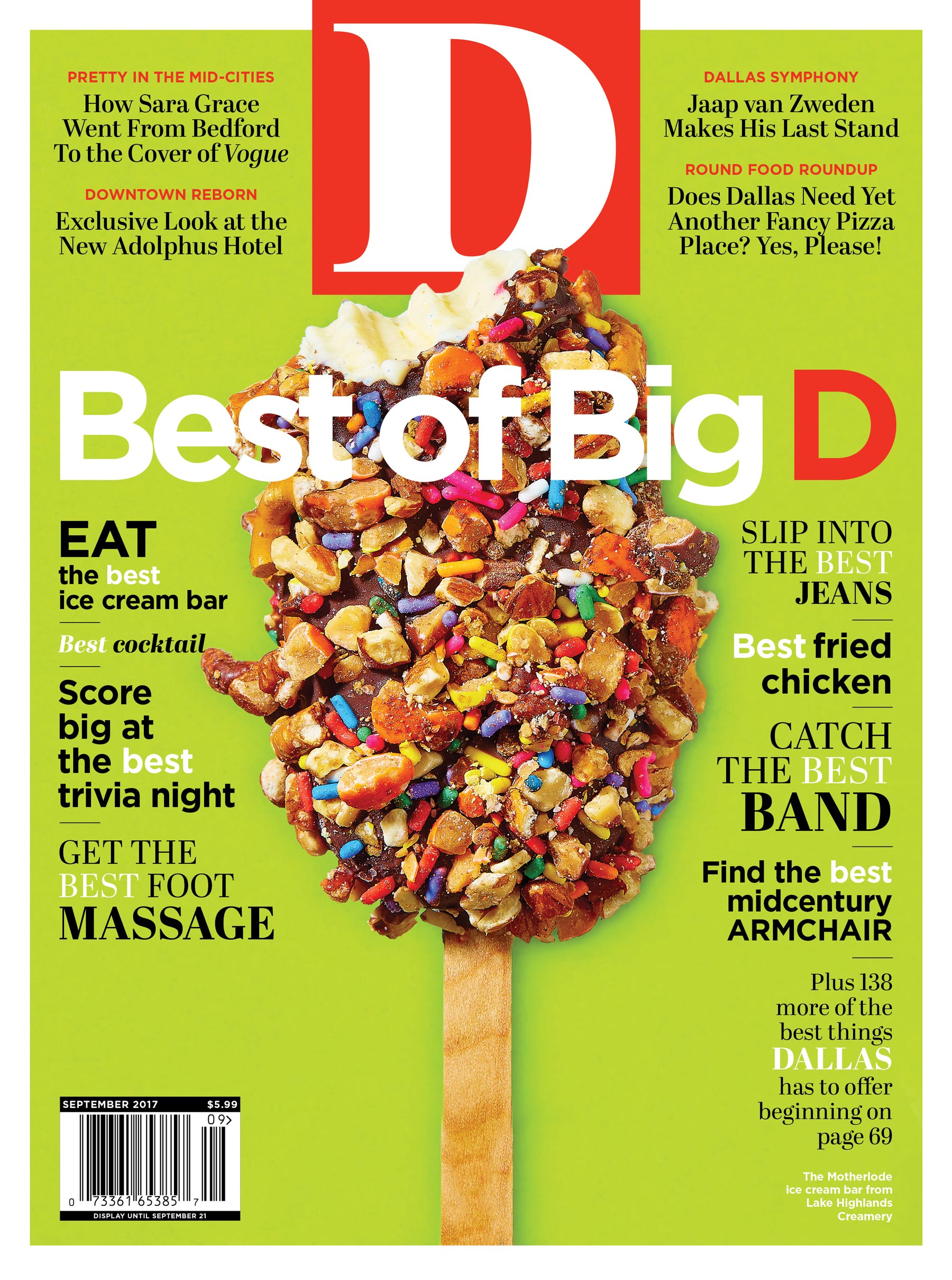In February 16, 2006, a 45- year-old Dutch conductor was set to take the podium in front of an American orchestra for the first time in a decade. He was one of many guest conductors brought through the Meyerson that year, as the Dallas Symphony searched for a new musical director. But the chief conductor of the Netherlands Radio Philharmonic Orchestra was not really considered a candidate for the job. Many of the musicians onstage were unfamiliar with the young maestro, and the audience struggled to pronounce the name printed in the program.
But after that night, after the fireball from Amsterdam took the baton and set the DSO ablaze, the city would not soon forget the name Jaap van Zweden.
“Sell the farm, mortgage the children, cancel the cruise,” the Dallas Morning News’ Scott Cantrell wrote in his review. “Do what you have to do to get to the Dallas Symphony Orchestra’s concerts this weekend. You’ll see the familiar faces onstage. But something miraculous has happened: the DSO is playing like one of the world’s greatest orchestras.”
That kind of praise would continue to be heaped on van Zweden throughout his time as the DSO’s musical director, a tenure that will come to a close after his 10th and final season with the orchestra, which kicks off this month. From the start, the musicians in the orchestra could sense that van Zweden was something different.
“It was pretty apparent, almost immediately, that he could change an orchestra’s sound very quickly,” says principal percussionist Doug Howard. “Most of us had never heard of him before, and I really don’t think that he was high on their list of candidates. But he came in and—and we started talking it up. There were a number of us—I was one of them—who spoke to the people on the search committee.”
What van Zweden did with the orchestra is difficult to pin down. Music making is an abstract art, not an exact science. The DSO musicians speak to the attention he paid to the strings—the way that van Zweden, a violin prodigy, offered advice on bowing or encouraged volume from the back rows of the string section. Others talk about his ability to articulate precisely what he expected from various players during specific moments of a piece of music. Then there was his unrelenting work ethic, which alternatively inspired and frustrated some of the members of the orchestra.
“It was really almost like a light switch when he came in, as far as the energy level of the orchestra,” says principal trumpeter Ryan Anthony. “He had a very clear concept of what he wanted, and he was able to not only verbalize it, but show it. That unified the orchestra.”
The ultimate show of esteem for the orchestra and its Dutch dynamo came last year when the New York Philharmonic, one of the oldest and most prestigious symphonies in the world, tapped van Zweden to be its next musical director. His appointment vindicated Dallas’ excitement over its conductor. But van Zweden’s imminent departure also raises a question: having achieved all that he has with the DSO, are Jaap van Zweden’s shoes too big to fill?
To Dallas, van Zweden was more than just a musical director. His arrival coincided with the opening of the AT&T Performing Arts Center and the completion of the Dallas Arts District, and van Zweden seemed to embody the city’s newfound sense of cultural ambition and the striving sense of prestige and promise conveyed by all those new buildings. And he delivered on it. Van Zweden repositioned the orchestra’s national standing and Dallas’ reputation as a cultural center along with it, all the while bringing new visibility within the city to Dallas’ symphony and its arts.
More than anyone else, van Zweden became symbolic of Dallas culture at large—or, at least, how Dallas liked to imagine its cultural presence. He was the perfect kind of Dallas cultural figure: coolly debonair, yet charismatic and visually gregarious, a transplant who brought with him the imprimatur of international sophistication, but who nonetheless embraced, praised, and advanced his adopted city.
Now his departure comes at a moment of transition both for Dallas and its orchestra, as the DSO also searches for a new CEO after the departure of Jonathan Martin. It is difficult to imagine that the organization will find a new conductor who will be able to match van Zweden’s presence and public persona. Maybe that’s a good thing. Today the symphony, thanks to van Zweden, is a different animal than it was in 2007, and there is a new kind of pressure, not to find someone like van Zweden to give it a new quality, but to find someone who can sustain what’s already there.
“I think that it is possible for there to be carry-over from the way the orchestra is playing today, but it is also critical that his replacement come in and set a high standard and continue the progress that has been made in the last decade,” Howard says. “I think we’re at a critical period for the development of the orchestra. We can’t afford to step back.”
Peter Czornyj, the DSO’s vice president of artistic operations, sits on the search committee and says that he believes the most important quality in the new musical director is finding someone who is the right fit for the orchestra, though that doesn’t necessarily mean that the next director will match van Zweden’s profile or style.
“We know where we are heading, and we have a very tight and very small group of preferred candidates,” Czornyj says. “It is likely they will be in front of the orchestra before a decision is made. We need to make sure chemistry is right.”
And as Anthony astutely points out, in Dallas the chemistry of a conductor and his orchestra must extend beyond the concert hall.
“He took us to another level in the community,” Anthony says. “We want the best candidate for this orchestra and this community. Whoever that is will have an appropriate demeanor and character, and obviously, being here in Dallas, they need to be outgoing, embrace the city and community, take us very seriously.”
All of which sets up one of the most exciting classical music seasons in memory. On the one hand, the schedule has been drawn up to showcase everything that van Zweden has meant to the orchestra. Mammoth fixtures in the canon of Western music—Beethoven’s Ninth and Eroica symphonies, Bruckner’s Symphony No. 8, Mahler’s Second and Fifth symphonies, and Rachmaninoff’s Symphony No. 2—are paired with new work, such as the world premiere of composer Jonathan Leshnoff’s new violin concerto (composed for DSO concertmaster Alexander Kerr), the Dallas premiere of Philip Glass’ Double Concerto for Two Pianos, and a reprise performance of Steven Stucky’s “Elegy” from August 4, 1964, a piece the DSO commissioned and received a Grammy nomination for.
But the season will also bring through the Meyerson a parade of guest conductors who may all be in the running to fill van Zweden’s shoes: Metropolitan Opera principal conductor Fabio Luisi; Philadelphia Orchestra conductor-in-residence Cristian Măcelaru (making his DSO debut); Donald Runnicles, general music director of the Deutsche Oper Berlin; Netherlands Radio Philharmonic Orchestra principal guest conductor James Gaffigan; Jun Märkl, former chief conductor of the Basque National Orchestra; and principal guest conductor of Madrid’s Teatro Real, Pablo Heras-Casado.
Any of those names could be at the top of the orchestra’s org chart within a few seasons. Or maybe the DSO’s 2017–2018 season could provide a moment like that one back in February 2006, when an unknown talent stepped up to the podium and changed the orchestra—and the city—forever.






